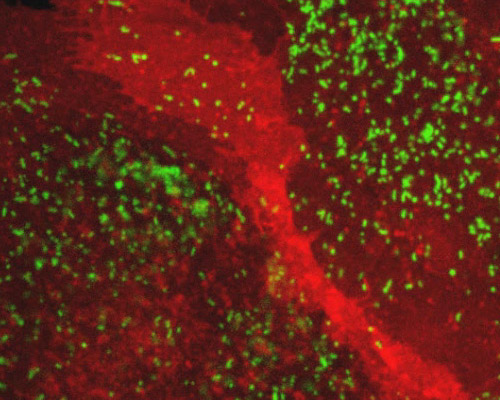Monkey Kidney Cells with mEmerald-PMP and mCherry-CAAX

African green monkey kidney epithelial cells (BS-C-1 line) at low and high passage levels may prove to be important tools to study the molecular basis of malignant tumor growth. Growth inhibitory activity in these cells has been proved to arise from transforming growth factor beta 2, the activity secreted from the cells in latent form. The BS-C-1 cells appearing in this digital video sequence are visualized expressing a mEmerald fusion tag with PMP, highlighting peroxisomes. Peroxisomes contain a number of enzymes and function in an array of metabolic reactions. Morphologically peroxisomes are very similar to lysosomes, but in terms of replication they are generally believed to hold more in common with mitochondria and chloroplasts. Studies suggest that proteins that are to be delivered to peroxisomes are formed into completed polypeptide chains and new peroxisomes are formed by the division of existing peroxisomes.
The cells were additionally tagged with mCherry fused to farnesyl. mCherry, which is shown fused to farnesyl, is one of the red mFruit fluorescent proteins developed by Roger Tsien and colleagues. Excitation and emission maxima of mCherry occur at 587 and 610 nanometers, respectively.



